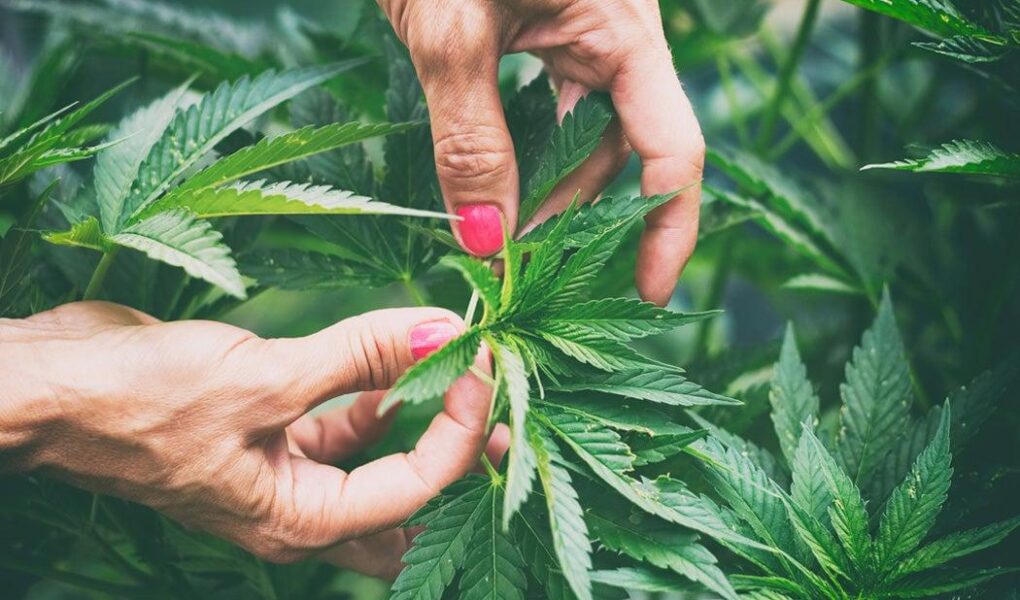Unlocking the Mysteries of Cannabis: A Guide to Knowledge and Exploration
In the ever-evolving landscape of cannabis, curiosity is the compass guiding both newcomers and seasoned enthusiasts alike. From the vibrant green of freshly harvested buds to the therapeutic properties whispered in hushed conversations, cannabis holds a wealth of information waiting to be explored. This article invites you on a journey through the intricate world of cannabis, offering insights into its cultivation, consumption, and myriad uses. Whether you seek to nurture your own plants, understand the various strains available, or uncover the myriad ways to integrate cannabis into your lifestyle, this guide will serve as your trusted companion. So, roll up your sleeves, open your mind, and prepare to delve into the fascinating realm of cannabis—where knowledge is as abundant as the plant itself.
Table of Contents
- Understanding the Basics of Cannabis Cultivation
- Essential Equipment for Growing Cannabis at Home
- Mastering the Art of Cannabis Cooking and Infusion
- Navigating the Legal Landscape of Cannabis Use and Cultivation
- Q&A
- In Conclusion
Understanding the Basics of Cannabis Cultivation
Successful cannabis cultivation begins with a solid understanding of the fundamental factors that influence plant health and growth. To initiate the process, consider the following essential elements:
- Lighting: Providing adequate light is crucial for photosynthesis. Use either natural sunlight or artificial grow lights that mimic sunlight spectrum.
- Soil Quality: A nutrient-rich, well-draining soil fosters healthy root development. Organic soil mixes can enhance nutrient availability.
- Water and Humidity: Maintaining proper moisture levels and humidity settings is vital. Overwatering can lead to root rot, while too little moisture can stunt growth.
Once these basic requirements are established, you can focus on the specifics of the cultivation process. Key stages include:
| Growth Stage | Duration | Care Tips |
|---|---|---|
| Seedling | 2-3 weeks | Light: 18-24 hours; Water: Keep soil moist |
| Vegetative | 3-16 weeks | Light: 18 hours; Prune for shape |
| Flowering | 8-12 weeks | Light: 12 hours; Monitor for pests |
Understanding each phase allows you to adjust care strategies, ensuring your plants thrive throughout their lifecycle. As you gain experience, adapting these practices to suit your specific environment will lead to optimum yields and impressive quality.
Essential Equipment for Growing Cannabis at Home
To cultivate cannabis effectively at home, it’s crucial to equip yourself with the right tools. This ensures not only a healthy growth cycle but also maximizes the yield and quality of your harvest. Start with growing lights, which are essential for indoor cultivation, as they mimic natural sunlight. Depending on your space, you may choose from options like LED, HID, or fluorescent lights. Additionally, invest in a good ventilation system to maintain airflow and temperature control, helping to prevent mold and pests. Other key items include pots or grow bags, quality soil or hydroponic systems, and pH testing kits to monitor the acidity of your medium.
Moreover, having the right tools for care and maintenance is vital for success. Consider including the following essentials in your setup: pruning shears for trimming excess foliage, nutrients tailored specifically for cannabis plants, and a humidifier to maintain optimal moisture levels in the air. Monitoring tools like a thermometer and a humidity gauge are also beneficial for tracking environmental conditions. Below is a simple table that outlines these supplies and their purposes:
| Equipment | Purpose |
|---|---|
| Growing Lights | Provides adequate lighting for plant growth |
| Ventilation System | Ensures proper airflow and temperature control |
| Pots/Grow Bags | Holds the growing medium and encourages root development |
| Nutrients | Supports plant health and growth |
| Pruning Shears | Facilitates maintenance and shaping of plants |
Mastering the Art of Cannabis Cooking and Infusion
Creating your own cannabis-infused ingredients at home can elevate your culinary experiences, allowing you to explore flavors and effects that suit your preferences. To get started, choose a method of infusion that matches your cooking style. Some popular techniques include:
- Infused oils – Great for sautéing or salad dressings, using olive or coconut oil.
- Cannabis butter – The classic choice for baking, ideal for cookies and brownies.
- Tinctures – A versatile option that can be added to drinks or taken sublingually.
When infusing, pay attention to dosage and strain selection. Different strains impart unique flavors and effects, so it’s helpful to understand your desired outcomes. Here’s a quick reference table on common strains and their characteristics:
| Strain | Flavor Profile | Effect |
|---|---|---|
| Blue Dream | Sweet, Berry | Balanced, Relaxing |
| OG Kush | Pine, Earthy | Euphoric, Stress-Relief |
| Sour Diesel | Fuel, Citrus | Uplifting, Energetic |
Navigating the Legal Landscape of Cannabis Use and Cultivation
Understanding the legal framework surrounding cannabis use and cultivation is essential for anyone looking to engage in this growing market. Laws vary significantly from one jurisdiction to another, making it crucial to stay informed about local regulations. Here are some key areas to explore:
- State vs. Federal Laws: Different states have different regulations about cultivation and use. Federal laws may still classify cannabis as a Schedule I substance, complicating legal status.
- Licensing Requirements: Many jurisdictions require licenses for cultivation, processing, and selling cannabis. Researching these requirements is a fundamental step.
- Home Growing Regulations: If you plan to grow cannabis at home, you must understand limits on plant counts and whether municipalities impose additional restrictions.
Navigating this legal landscape can be daunting, yet remaining compliant is essential for avoiding penalties. Keeping track of changes in legislation is part of the process. Consider utilizing resources such as:
| Resource Type | Description |
|---|---|
| Legal Counsel | Consulting with a lawyer knowledgeable in cannabis law can provide personalized guidance. |
| Online Databases | Websites that compile current laws can offer quick insights into regional regulations. |
| Local Advocacy Groups | These organizations often provide information on laws and may engage in reform efforts. |
Q&A
Q&A: Your Guide to Navigating the World of Cannabis
Q1: What is cannabis, and how is it typically used?
A1: Cannabis is a plant that has been cultivated for thousands of years for various purposes, including medicinal, recreational, and industrial applications. It can be consumed in multiple forms—smoked, vaporized, ingested, or applied topically. Each method has its own unique effects and onset times, making it important for users to understand their options.
Q2: What should I consider before trying cannabis?
A2: Before diving into the world of cannabis, consider your local laws, as its legality varies significantly. Additionally, assess your individual health needs or preexisting conditions, as certain strains and methods of consumption may affect you differently. Engaging in responsible usage, starting with low doses, and being aware of potential interactions with medications are also prudent steps.
Q3: How do I choose the right cannabis strain?
A3: The right strain often depends on your personal goals. Cannabis strains are commonly categorized into three types: Indica, Sativa, and Hybrid. Indica strains are typically known for their relaxing effects, Sativas for their energizing properties, and Hybrids for a mix of both. Researching strain characteristics, consulting with knowledgeable budtenders, and pilots experiencing small doses can help align your choice with your desired experience.
Q4: What methods of consumption are available, and how do they differ?
A4: Cannabis can be consumed in a variety of ways, including:
- Smoking: Traditional method using joints, blunts, or pipes; effects are felt quickly.
- Vaporization: Inhalation of vapor from heated cannabis, offering a smoother hit with fewer harmful byproducts.
- Edibles: Food products infused with cannabis; effects are delayed but can last longer.
- Tinctures: Liquid extracts taken sublingually for rapid effects.
- Topicals: Creams and balms applied directly to the skin; they provide localized relief without psychoactive effects.
Each method has different onset times, durations, and intensities, so it’s essential to choose according to your comfort and preferences.
Q5: How do I properly dose cannabis?
A5: Dosing cannabis can be tricky due to individual variability in tolerance and sensitivity. It’s best to start low and go slow—begin with a small amount and wait to see how it affects you before consuming more. For edibles, this means starting with 5-10 mg of THC, while inhalation methods often require just a puff or two to gauge effects. Keeping a journal of your experiences can help tailor your future doses.
Q6: What are some potential side effects of cannabis?
A6: While many users enjoy the benefits of cannabis, there are potential side effects, including dry mouth, increased heart rate, memory impairment, and, in some cases, anxiety or paranoia. Being aware of these potential effects can help you make informed choices, and moderation is key to a positive experience.
Q7: How do I find reliable cannabis products?
A7: Look for licensed dispensaries that provide third-party lab testing results. This ensures that the products are free from harmful pesticides and accurately labeled regarding their cannabinoid content. Reviews from other consumers can also guide you in selecting reputable brands and products.
Q8: Are there benefits to using cannabis?
A8: Many users report benefits such as pain relief, reduced anxiety, improved sleep quality, and increased appetite. Some studies suggest potential therapeutic applications for conditions like epilepsy, multiple sclerosis, and chronic pain. However, individual results may vary, and consulting with a healthcare professional is advised, especially for medicinal use.
Q9: How can I educate myself further on cannabis?
A9: The cannabis landscape is continually evolving, so staying informed is crucial. Consider reading books from reputable authors, following credible online resources, attending workshops or community events, and joining forums or discussion groups focused on cannabis education. Engaging in dialogue with experienced users can also provide valuable insights.
Q10: What should I do if I have further questions or concerns?
A10: If you’re feeling uncertain or have more in-depth questions, consulting a healthcare professional, especially one knowledgeable about cannabis, can provide tailored guidance. Additionally, consider reaching out to local cannabis advocacy groups or online communities where experienced users gather to share knowledge and tips.
Embark on your cannabis journey with curiosity and caution, and remember that educating yourself is the first step toward a positive and informed experience.
In Conclusion
As we conclude our exploration of the fascinating world of cannabis and its myriad uses, from cultivation to consumption, we hope this guide has opened new doors of understanding for you. Whether you are a curious newcomer or a seasoned aficionado, the journey into the nuances of cannabis is one that continually evolves, inviting us to learn, adapt, and appreciate its complexity.
Remember, responsible use and respect for local laws and regulations are paramount, as is the appreciation of the plant’s rich history and potential benefits. As you embark on your own cannabis journey, may you do so with curiosity, creativity, and an open mind. The possibilities are as diverse as the strains themselves, waiting to be discovered by those willing to explore. So, roll up your sleeves, and let your adventure with cannabis begin—who knows what you might find along the way?



